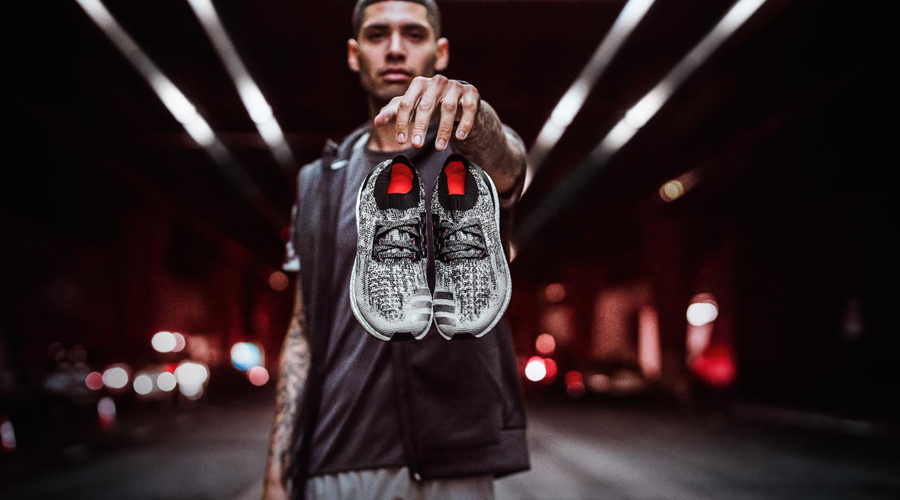By Tom Ryan
Citing a new internal survey, UBS said concerns in the marketplace around slowing athletic footwear and apparel growth in the U.S. are “overblown.”
In the report, Michael Binetti said the concerns followed the deceleration in Nike’s reported numbers and reports of elevated inventories in the channel. The inventory glut is being traced to a difficult holiday selling season for softlines overall, including athletic apparel, as well as the repercussions of the Sports Authority bankruptcy filing.
But a U.S. survey of 1,000 U.S. consumers by UBS suggests U.S. footwear demand trends are set to remain solid. Wrote Binetti, “Footwear purchase intent among existing consumers remains solid compared to purchases made over the last 12 months, though not quite as positive as in Europe.”
The data coincides with recent SSI Data* that has shown footwear sell-out reaccelerating to a mid-to-high single digit year-over-year run rate. Nike also commented on June 28 that U.S. consumer demand for sportswear continues to feel “very strong.”
Binetti added, “We believe as inventories in the channel improve, demand for new innovation from the major brands + our survey showing signaling increasing purchase intent will result in athletic category reacceleration.”
The report also found that Nike is still heavily favored over Adidas in the U.S. despite recent gains by Adidas. Based on quarterly sales performances and SSI sell-out data, Adidas and Under Armour are taking share from Nike in key U.S. athletic categories. However the scale of gap in brand perceptions between Adidas and Nike/Under Armour “remains substantial.” In the UBS survey, Adidas was only as popular as Puma based on Net Promoter Score. The survey also suggested key brand perception potential for Adidas lies with under 25 year olds, women and lower income demographics.
“Our hypothesis is that Adidas’ revival in fortunes has been led by a combination of better execution, on-trend product launches and helped relative to Nike by the increased popularity of lifestyle silhouettes and slowdown in basketball footwear,” said Binetti. “We think the next test for Adidas may lie in the coming months as the Nike innovation machine adapts and responds.”
Beyond the 1,000 U.S. consumers, the UBS Evidence Lab surveyed another 3,000 consumers in Germany, France and the U.K. in March/April 2016. This was UBS’ first survey in the U.S. and its second in Europe.
Other findings in the report:
• Footwear indicators positive in Europe: UBS’ second Europe survey showed footwear brand loyalty rates have increased significantly year-on-year and footwear purchase intent is still rising.
• Nike brand perceptions in Europe improving relative to Adidas: Nike’s gain in perception were seen as surprising given Adidas’ revenue outperformance in Europe since mid-2015. Binetti wrote, “The improvement of Nike’s brand perceptions relative to Adidas over the last 12 months suggests that the level of Adidas’ outperformance against Nike in Europe could begin to reduce ahead – much will depend on the relative popularity of new product launches.”
• Nike and Under Armour lead in youth: Nike and Under Armour’s brand perceptions were found to be furthest ahead of Adidas with young consumers (16-24 year olds). Under Armour is seen mimicking its success in the U.S. by gathering mindshare with young consumers early on in its push into Europe. The delta in Europe between Adidas and Nike remains unchanged compared to 12 months ago. UBS wrote, “In our view Adidas needs to start reducing this gap soon or it runs the risk of allowing Nike to establish long-standing, leading brand preference among these consumers. We may even have seen the first effects of the lifetime value phenomenon from the shift in European brand preferences over the last 12 months from Adidas to that which was most pronounced among 25-34 year olds.”
• Footwear pricing power healthy: Leading sportswear brands have focused more on premiumisation in recent years. UBS’s survey suggests that pricing power remains healthy, with more consumers citing ‘good value’ than non-purchasers citing ‘too expensive’ in both Europe and Nike U.S. The data also suggests Adidas may have a greater pricing opportunity than Nike.
Photo courtesy Adidas
*SSI Data, powered by SportsOneSource, collects and analyzes POS data from more than 20,000 retail doors across nine channels of distribution. To learn more call 303.997.7302.
















